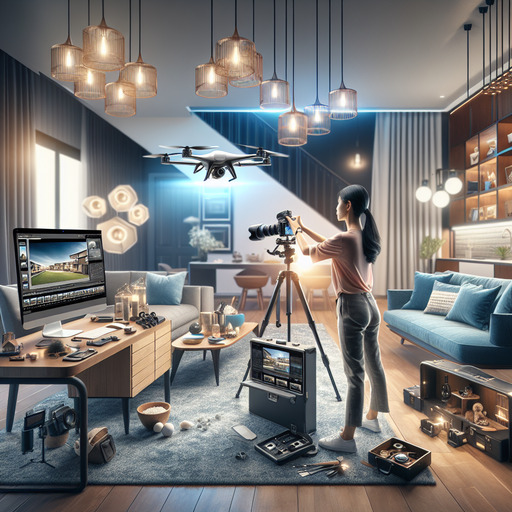
-
Table of Contents
- Mastering Real Estate Photography: Tips, Techniques, and Tools
- Understanding the Importance of Real Estate Photography
- Essential Real Estate Photography Tips
- 1. Mastering the Art of Lighting
- 2. Choosing the Right Equipment
- 3. The Power of Drone Photography
- Editing and Enhancing Real Estate Photos
- Pricing Your Real Estate Photography Services
- Conclusion
- Questions and Answers
Mastering Real Estate Photography: Tips, Techniques, and Tools
In the competitive world of real estate, first impressions are everything. High-quality real estate photography can make or break a property listing, influencing potential buyers’ decisions before they even step foot inside. Whether you’re a seasoned photographer or a real estate agent looking to enhance your listings, understanding the nuances of real estate photography is crucial. This guide will walk you through essential tips, techniques, and tools to elevate your property photography game.
Understanding the Importance of Real Estate Photography
Real estate photography is more than just snapping pictures of a property. It’s about capturing the essence and potential of a space, enticing buyers to envision themselves living there. According to the National Association of Realtors, 87% of home buyers found photos to be the most useful feature of real estate websites. This statistic underscores the importance of investing in quality photography to make your listings stand out.
Essential Real Estate Photography Tips
1. Mastering the Art of Lighting
Lighting is the cornerstone of great photography. In real estate, it can highlight the best features of a property and create a welcoming atmosphere.
- Natural Light: Shoot during the golden hours (early morning or late afternoon) to take advantage of soft, natural light.
- Artificial Light: Use additional lighting equipment to fill in shadows and ensure even lighting throughout the space.
2. Choosing the Right Equipment
Investing in the right equipment can significantly impact the quality of your real estate photos.
- Camera: A DSLR or mirrorless camera with a wide-angle lens is ideal for capturing expansive interior shots.
- Tripod: A sturdy tripod ensures stability and allows for longer exposure times in low-light conditions.
3. The Power of Drone Photography
Real estate drone photography offers a unique perspective, showcasing the property’s surroundings and providing potential buyers with a comprehensive view.
- Regulations: Ensure you comply with local drone regulations and obtain necessary permits.
- Angles: Experiment with different angles to highlight the property’s best features and its neighborhood.
Editing and Enhancing Real Estate Photos
Post-processing is a critical step in real estate photography. It involves enhancing images to ensure they accurately represent the property while looking visually appealing.
- Software: Use editing software like Adobe Lightroom or Photoshop to adjust brightness, contrast, and color balance.
- Consistency: Maintain a consistent editing style across all photos to create a cohesive look for your listings.
Pricing Your Real Estate Photography Services
Determining the right pricing for your real estate photography services can be challenging. Consider factors such as the property’s size, location, and the complexity of the shoot.
- Market Research: Analyze competitors’ pricing to ensure your rates are competitive.
- Value Proposition: Highlight the unique value you bring, such as quick turnaround times or specialized services like drone photography.
Conclusion
Real estate photography is a powerful tool that can significantly impact the success of property listings. By mastering lighting, choosing the right equipment, and utilizing editing techniques, you can create stunning images that captivate potential buyers. Whether you’re a photographer or a real estate professional, these insights will help you elevate your property photography and stand out in a crowded market.
For more information on real estate photography, you can visit this Wikipedia page.
Questions and Answers
Q1: What is the best time of day to take real estate photos?
A1: The best time to take real estate photos is during the golden hours, which are early morning or late afternoon. This timing provides soft, natural light that enhances the property’s features.
Q2: How can I make small rooms look larger in photos?
A2: Use a wide-angle lens to capture more of the room in a single shot. Additionally, declutter the space and use mirrors to create the illusion of depth and space.
Q3: What are the benefits of using drone photography in real estate?
A3: Drone photography offers a unique aerial perspective, showcasing the property’s surroundings and providing potential buyers with a comprehensive view of the area.
If you’re interested in learning more about our real estate photography services or have any questions, please reach out to us via our contact page.